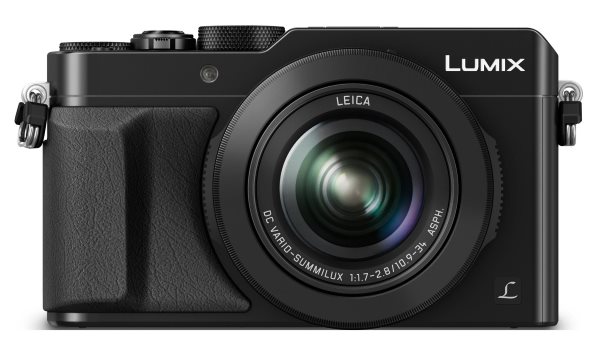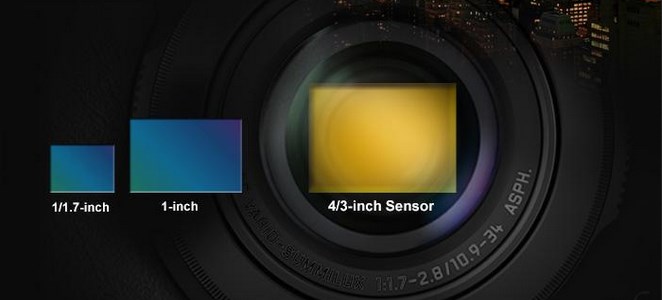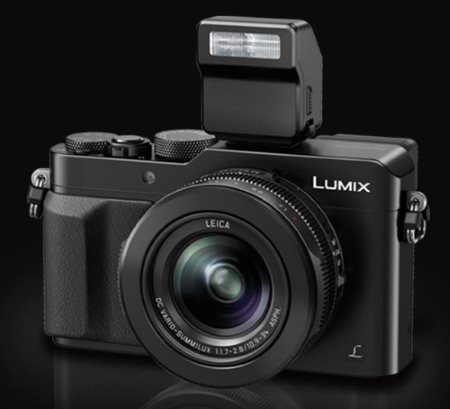Quality aside, there is something special about holding a standalone camera in your hands to take pictures as opposed to a smartphone. The buttons, rings and dials are damn fun to play with.
Photokina
Photokina is the biggest camera show in the world and comes around once every two years. Photokina is traditionally held in Cologne, Germany. Trade professionals from all around the world come to Photokina to exhibit and see the latest, greatest and upcoming photography tech.
Smart phone vs budget cameras
Partially due to miniaturization technology, and partially forced by the smart phone market eating up the average consumer’s dollar, smaller cameras have really come on strong these last couple years. Manufacturers are coming with bigger sensors and more features than ever before.
One of the most important features on a camera is its sensor size. Sony in 2012 brought to market a 1″ sensor in a body small enough to fit in your pocket comfortably. While the Sony RX100 couldn’t be called tiny, for a 1″ sensor camera, it was a huge step forward for “compact” cameras. With the RX100, shutterbugs could now catch great shots in low light and the race was on. For the next couple of years, most other camera brands had to be satisfied laying in RX100’s wake. Two standouts in regards to competition with the RX100 is the Canon “S” line which sports a 1/1.7″ sensor and is a step smaller than the RX100. People who wanted something they could slip into their jeans without feeling the extra weight would be more than happy with an “S” line camera from Canon.
For the next couple of years, most other camera brands had to be satisfied laying in RX100’s wake. Two standouts in regards to competition with the RX100 is the Canon “S” line which sports a 1/1.7″ sensor and is a step smaller than the RX100. People who wanted something they could slip into their jeans without feeling the extra weight would be more than happy with an “S” line camera from Canon.
Panasonic had the “LX” line which up until now has had a 1/1.7″ sensor. The most recent iteration of the LX line, the Panasonic LX7, has a super-bright f1.4 lens and physical controls that rival the RX100. Beyond the bright lens, the LX7 holds a special appeal for photographers, as it allows many adjustments with the twist of a dial or a push of a button, which on the RX100 requires navigating menu settings.
Still, Sony continued to remain supreme and was easily the most popular of the enthusiast camera bunch. Now after 2 years of Sony dominance, Panasonic is coming with something nobody had thought would happen until a week or so ago when the rumor of a 1″ Panasonic LX8 turned into a new rumor entirely — Panasonic LX100, the first ever micro 4/3 sensor camera with a fixed lens that can zoom.
Panasonic LX100 review sensor
To give you an idea of how big Panasonic’s micro 4/3-inch sensor is in comparison with other sensors, see this promo shot from Panasonic. The typical size of 1/2.3″ on a compact and 1/5.8″ on a mobile phone (some high-end mobiles are 1/2.3″), are not shown here. Rest assured they’re puny compared to what’s in the LX100.

From Panasonic:
“LX100 incorporates a large 4/3-inch High Sensitivity MOS Sensor with multi-aspect ratios. By maintaining resolution at 12.8-MP (in 4:3 setting), the volume of light is controlled to improve the S/N ratio, making it possible to create clear, detailed images with minimum noise. Even when shooting at ISO25600. Sensor total pixel is 16.8 MP.”
I’ve often maintained that megapixels is not the end-all-be-all in regards to image quality. Panasonic has bucked the trend and taken the less-is-more approach by making their huge (for a compact) sensor and making it “only” 16.8MP. In contrast, the relatively small 1″ sensor in the Sony RX100 is 20MP.
We see Apple taking the same approach as Panasonic with their new iPhone 6 and iPhone 6-Plus. They have made the sensors 8MP instead of jumping on the more-is-better 13 and 16 megapixel bandwagon.
“given two cameras with all else equal, the camera with more megapixels will be able to capture finer detail in well lit situations”
The argument between whether “more pixels” or “more light per pixel” rages on, but basically it boils down to this — given two cameras with all else equal, the camera with more megapixels will be able to capture finer detail in well lit situations, while the camera with less megapixels will do better in low-light.
Remember, I’ve said given all else equal. There are many other things to consider — the quality of the lens and the in-camera and post-processing are huge factors, and beyond that, how will the photo be viewed? If digitally and without huge crops, the higher detail of the high MP cameras will never be seen. Thus it would seem the lower megapixel camera would be more desirable. But if often making large prints or doing huge crops and shots are taken in bright environments, the higher MP camera may be more desirable.
Panasonic LX100 review lens
The lens in the Panasonic LX100 will be 24-75 F/1.7-2.8 LEICA DC VARIO-SUMMLUX Lens.
From Panasonic:
“This precision lens unit consists of 11 elements in eight groups with five aspherical lenses — including two ED lenses.”
We see here Panasonic has opted to go with a super-bright lens as opposed to giving a large zoom. In fact, the zoom range of 3x could be considered quite weak. I think Panasonic has made an excellent choice as I much prefer a brighter lens than a big zoom. There has to be a trade off to keep the Panasonic LX100 smallish. Of course, birders and the like will want to look elsewhere than the LX100.
Panasonic LX100 review “extras”
Pros and enthusiasts will rejoice at the inclusion of an EVF. The EVF easily allows composition and focus of photos in bright light.
Video buffs will love the 4K video. This has been all the rage the last year. 4K video is here to stay and the top enthusiast cameras are beginning to include it. If shooting 4K is of no interest, you can easily “grab” 8MP frames from 4K video. This allows the photographer to easily capture shots of quick action, such as kids, sports and 10 person shots with everyone’s eyes open, because instead of taking multiple shots, you simply record a couple seconds of 4K video, then go through and choose the best 8MP frame. A truly awesome feature when catching the moment perfectly counts.
“Because of the huge sensor and super bright lens, you’ll rarely need the flash”
While the Panasonic LX100 doesn’t come with a built-in flash, it does come with an external flash that connects to the camera via the hotshoe. This is a very interesting choice by Panasonic, and I like it a lot. To pack that huge sensor, bright lens and EVF into the camera, there needed to be some space made, so out went the flash. Because of the huge sensor and super bright lens, you’ll rarely need the flash, but it’s there as part of the package if needed. Huge kudos to Panasonic for including the flash in the set.
All in all, the package looks awesome. It’s on presale now at Amazon and will be released in November.
Rest assured there will be a long line to grab the Panasonic LX100 up. Just as Sony made history 2 years ago with the first RX100, Panasonic is making history now with the LX100 and am looking forward to getting my hands on this camera.

Leave a Reply